Science, Technology, and War
themes:
- does war speed up the progress of technology?
- the military is a big source of new technology (but only in certain areas)
- history of government support for scientific research and new technology
- from early on gov't supported some practical science, eg. mapmaking
- late 19th c. government funded agricultural research
- government-funded research for war started in WWI
- WWII even more funding for research
- this time the funding continued after the war
- government started funding basic science
- in recent years industry funding has become more
important than government funding
- what is the government good at doing and what is
private industry good at doing?
- the military-industrial-academic complex
- how does war shape the development of technology
The Civil War was significantly impacted by technology, particularly railroads and more accurate guns. Maxim's invention of the first machine gun grew out of civil war experiments. Yet when World War I came the U.S. found itself behind in military technology.
World War I started in 1914, US entered April 1917, Armistice Dec. 1918.
- The war quickly settled down to a trench warfare (photo) stalemate due to the use of machine guns and barbed wire--technology seemed to be the only way out.
- as well as airplanes and poison gas, tanks and submarines were developed into useful weapons
- The war therefore led to the first major wartime efforts to develop technology for military use

French tank
- A few months after the war began the French apparently used gas against the Germans and the Germans retaliated in kind.
- In the 9th month of the war the Germans released a cloud of chlorine gas--which causes choking--on French troops who retreated in panic, leaving behind perhaps 5,000 dead. A four mile gap in the line was opened, but the Germans had not brought forward enough reserves to exploit it and the Allies repaired the break.
- At first troops wore makeshift masks of handkerchiefs wetted with urine and tied over nose and mouth.
- Germany was widely criticized for breaking the Hague
Conventions of 1899.
- In mid-1915 Germans started using phosgene, which causes severe lung damage, and both sides developed gas masks.
- By the end of 1916 a variety of weapons were in use by both sides. Germans introduced mustard gas--could cause burns to exposed skin even when a soldier was protected by a mask.
- This quickly became a research race. It started with the US Bureau of Mines working on adapting mining equipment.
- A central lab was created in fall 1917 at American University--at peak employed 1200 scientists. Developed a new gas, Lewisite, that poisoned through the skin, simpler ways of producing mustard gas, and more
- Chemical Warfare Service created July 1918--university chemists and Bureau of Mines personnel were given commissions.
- In all as many as 50 different gases were used--poison-gas causalities 1.3 million with 92,000 deaths.
- After the war chemists were proud of their contribution to the nation--wanted ongoing research. Argued that chemical weapons were humane (and effective) because they disabled soldiers rather than killing them. They didn't get the continuing high level of research they wanted.
- A strong reaction against the use of gas took over instead. The Geneva Protocol--an international protocol signed in 1925 prohibiting the use in war of "asphyxiating, poisonous and other gasses" and of "bacteriological methods of warfare."
- The treaty held through World War II but use of
poison gas is a difficult issue today. Fear becomes
an issue even when it is not used: seven Israelis
suffocated to death due to improper use of gas masks
during Iraqi attacks in the Gulf War.
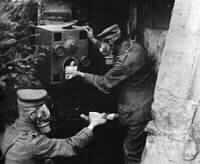
German signal corps soldiers placing their carrier pigeons in a shelter during a gas attack
The Navy also decided it needed to encourage research
- Thomas Edison said he had a plan for preparedness but that he was reluctant to discuss the terrible devices he had in mind. War could be mechanized with labor-saving devices
- In 1915 the Navy established the Naval Consulting Board
- the board was to consist of "Civilian Experts on Machines" who would originate ideas and critically examine ideas submitted by others--11 professional societies each named two members. These were engineers and business leaders, not scientists
- the Board had a big fight about building its own laboratory, but the laboratory that was eventually built continued after the war as the Naval Research Laboratory
- the effort that got the most public attention was a plan to screen inventions submitted by the public--Edison believed that American inventors could win the war
- 110,000 inventions were submitted, 110 deemed worthy of development, only one reached production--an aircraft simulator invented by W. Guy Ruggles
- one of the Board's largest projects was trying to find new methods of submarine detection
- they also sponsored research on gyroscopic stabilization, leading to the first primitive autopilots for aircraft (Lawrence Sperry proved they didn't work too well--at least not well enough for the pilot to get romantic instead of flying the plane)
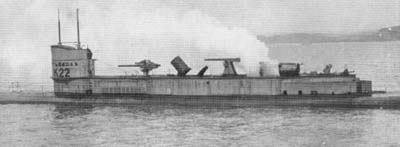
World War I British Submarine
- Scientists wanted to show how valuable science is: George Ellery Hale (an astronomer) wrote: "I really believe this is the greatest chance we have ever had to advance research in America"
- they also focused on the problem of submarine detection--German U-Boats sunk over a million tons of Allied and neutral merchantmen in the first quarter of 1917
- the NRC brought in professors from universities to work on the problem
- a young mathematician named Max Mason had the idea of a listening device that could focus sound--he build something that looked like a trombone
- the final device had a range of 3 miles and was very successful. Similar technology was developed for artillery ranging
- scientists felt they had proved the scientific research approach to developing new technology
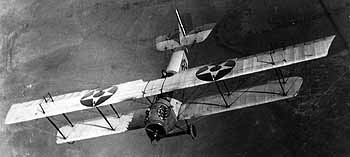
Curtis JN-4 Aircraft, World War I
- Europeans were more interested, and during World War
I learned to use aircraft for reconnaissance, bombing, and
fighting
- when the U.S. entered World War I in 1917, we lagged far behind in military aircraft
- European countries had done much more, and in 1915 the U.S. realized it was behind and created an organization called the National Advisory Committee for Aeronautics to jump-start the production of military aircraft.
- forced a patent pool--Manufacturers Aircraft Association--to allow the best technologies to be used
- the Curtis Company designed a training plane, the JN-4, but battle planes were built on a British design
- In the year before the U.S. declared war the U.S. aviation industry produced 411 planes, though a large number of airplane engines were shipped to Europe by one company partnership that had designed a good lightweight engine and techniques for mass-producing it (the Liberty Engine, Packard and Hall-Scott).
- all of the countries involved struggled to figure out how to make effective use of aircraft--new strategies had to be developed by pilots and integrated by generals
- mass production of aircraft was well underway in the U.S. when the war ended--2091 planes had been shipped to France and 1041 were awaiting shipment
- by the end of the war in 1919
the army had 5,500 planes, though most of the fighters
were purchased in Europe.

French Spad WWI fighter--National Air and Space Museum
there was a need for research also, or at least coordination, and it almost instantly outgrew the resources of amateurs like the Wright brothers or even the small firms that were building aircraft.
- The National Advisory Committee on Aeronautics was one of a number of organizations created as a result of lobbying by scientists and engineers for a new government role in research and development in World War I.
- President Wilson signed the naval appropriations bill that created the National Advisory Committee on Aeronautics in March 1915. The scientists, engineers and enthusiasts who had lobbied for the bill for more than four years wanted government funding of aeronautical research to allow the United States to catch up with rapid developments in Europe. But the legislation did not pass until the outbreak of war provided an additional push, and the bill did nothing more than create an advisory committee and provide it with a small appropriation.
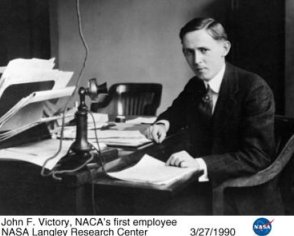
- The NACA then set out to invent its own
role. In its first few years the new Committee
played a significant role in the wartime coordination of
industry and used some of its small budget to sponsor
research at private institutions, but its leaders made the
building of a new laboratory their highest priority.
The laboratory at Langley Field, in Virginia, established
the NACA as a federal research agency despite its title as
an advisory committee. After the war ended, debates
over the role of the federal government in supporting and
regulating aviation created considerable uncertainly about
the future of the NACA, but the final result strengthened
the Committee's emphasis on research because other
aviation-related functions--regulation and the sponsorship
of infrastructure--were assigned to the Department of
Commerce. The federal government also helped the
aviation industry by funding air mail service.
- At the Langley Memorial Laboratory, dedicated in June 1920, NACA scientists and engineers set out to invent a role for the federal government in peacetime aviation research. The laboratory provided fairly up-to-date facilities: a wind tunnel, an engine-dynamometer laboratory, and a general research laboratory building.
- The laboratory developed a focus on aeronautical principles both in order to take advantage of its wind tunnel facilities and to avoid competition with the military services (which wanted to maintain control of testing and setting specifications for new aircraft designs for miliary missions) and the National Bureau of Standards and industry (which had facilities for engine research).
- The NACA found a niche not only in its choice of research program but also in how it approached research problems: "The strength of the NACA seems to be that it had the luxury of pursuing incrementally over a long period of time answers to problems that were of great interest to the commercial and military worlds."
- The leaders of the NACA initially thought that the committee had to establish its reputation by scientific (not engineering) achievement, and hired Max Munk from Germany because of his theoretical reputation. Munk made a key discovery, that by compressing the air in a tunnel you could use scale models in wind tunnels to provide results that would correlate with data from a full-sized plane in actual use. This idea was put into use in a 5 foot diameter variable density tunnel in 1923, and then was followed by a 20 foot diameter tunnel for full scale research in 1927.
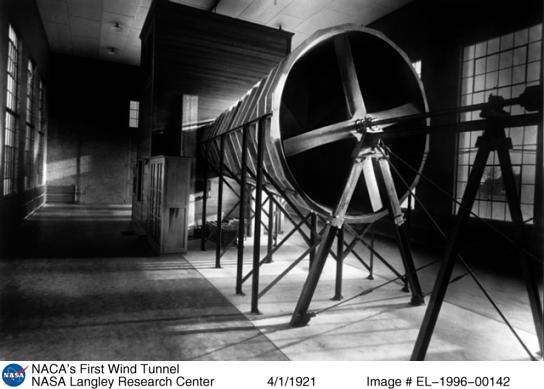
NACA's first wind tunnel
- the NACA used the large tunnel for research on propellers, landing gear, and drag. They discovered that the engine provide as much as 1/3 of the plane's total drag, and invented a way to cover the engine to enhance cooling while reducing drag. During a test a plane that normally averaged 157 mph averaged 177 mph. But this wasn't a theoretical breakthrough--each cowling was custom developed for a particular combination of airplane and engine by wind tunnel experiments.
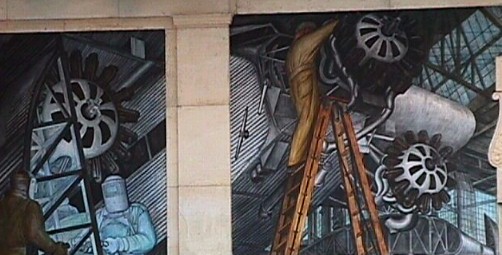
detail from Diego Rivera mural at Detroit Institute of Art
- The necessity of practical results to justify federal funding and the dominant role of engineers on the NACA main committee gradually reversed that attitude, establishing the relationship between theoretical and practical research as a central tension within the laboratory and the agency as a whole.
At the end of World War I, the airplane had proved itself as a weapon but military aircraft weren't of much practical use
- because there were more surplus airplanes than demand, production of new airplanes almost ceased until the government rescued the industry by creating an air mail service
- Aeronautical Engineering began to develop as a field of study: in 1929 1400 students were studying aero-engineering in more than a dozen schools.
- Meanwhile, aircraft design was developing in the 1920s and 1930s as the market finally began to expand again.
- Ford trimotor of 1926--metal structure and cantilevered wing.
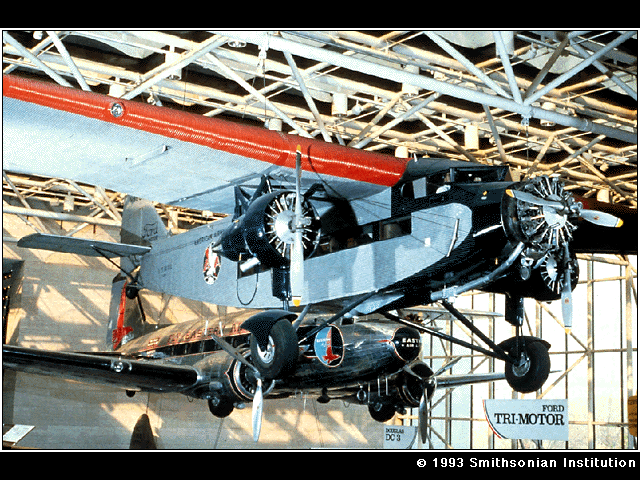
Ford Trimotor, National Air and Space Museum
- People began to predict that soon there would be an
airplane in every garage
- Aluminum propeller developed in 1925, and variable pitch propellers by the end of the decade.
- The first successful helicopter flew in Germany in 1936; Russian emigre Igor Sikorsky had a U.S. design in tests by 1939 and got a contract from the army in 1940
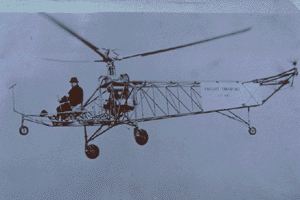
Sikorsky's first helicopter
World War II started in 1939, the US entered in the fall of 1941
- it grew out of the desperate economic situation and finally provided an end to the depression
- scientists and engineers were eager to put their skill to work and the military moved more quickly this time, organizing a National Defense Research Committee in 1940
- the NDRC concentrated on placing contracts at universities, not building new research centers
- In May 1941 NDRC changed its name to the Office of Scientific Research and Development
- sponsored many important wartime research projects

radar set on airplane
- radar research had begun in the 1930s after some scientists had observed reflections of radio waves from objects
- by 1937 the British had a continuous chain of stations but these used long waves and required two large antennas
- N. L. Oliphant invented the resonant cavity magnetron, first tube capable of sufficient power for radar at wavelengths less than 50 cm (therefore allowing much smaller antennas and also more accurate results)
- this new idea was brought to the US in 1940 and a major research effort started to develop microwave radar
- the Radiation Lab at MIT designed 150 different radar systems--three generations of systems went into use before the war ended
- invented a junction box to transmit and receive from the same antenna
- invented Loran: a way to determine your location by triangulating from special radio signals
- developed the Microwave Early Warning system with a range of 200 miles
- the Radio Lab at Harvard worked on radar countermeasures--jamming, straw
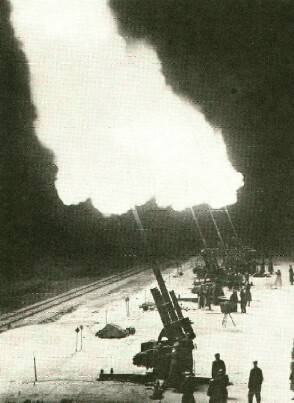
antiaircraft fire
- in 1940 anti-aircraft fire using timed fused brought down one plane per 2500 rounds fired
- you need the shell to explode even without a direct hit
- many possible technological approaches for detecting when the shell is close to the airplane--radar, sonar, passive acoustic, photelectric...
- very hard to detect anything from a shell not just moving rapidly through the air but also spinning at 475 RPS. During development it was jokingly called "the world's most complicated form of self-destroying ammunition"
- radar seemed like the best bet, but how to make a device with vacuum tubes that would fit in a space the size of an ice cream cone and survive a force of 20,000 g when fired?
- at one point scientists were dropping tubes from the roof of a 3 story building onto a concrete driveway to test their impact resistance
- development went amazingly fast: pilot production started in Nov. 1941, simulated combat tests in Aug. 1942, in use by Jan. 1943
- mass production of 2 million fuses reduced the cost to $16-23
- results: 6 times more effective than timed fuses
The Atomic Bomb:
German scientists many of the key discoveries in nuclear physics that made nuclear weapons possible, leading to fear in the U.S. that the Germans would build an atomic bomb.
- some elements are unstable and will naturally change
to something else and release radioactivity
- Henri Becquerel discovered radioactivity as a property of uranium in 1896, Marie Curie discovered other radioactive elements, but they didn't know what was happening
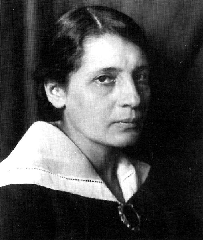
Lise Meitner
- Otto Hahn , Lise Meitner, and O.R. Frisch worked in the 1930s to understand the results of bombarding uranium with neutrons--realized that the uranium fissioned.
- by 1939 it was obvious and widely know that a chain reaction might be possible because each atom that fissioned released neutrons that could hit other atoms and cause them to fission
- Refugee scientists in the U.S. feared a German bomb. Leo Szilard composed two letters for Einstein to sign warning President Roosevelt of the dangers of a German atomic bomb, one in August 1939 and the other in April 1940. Fear was widespread enough that U.S. and British journals voluntarily censored related scientific papers.
- Germans were indeed working on a bomb, but got stuck in a dead end. Supporters of Werner Heisenberg say he did this on purpose.
- First organized under National Defense
Research Committee (approval for project Oct. 1941) then
turned over to the army in June 1942. The army put
General Leslie
Groves in charge.
- The first thing to do was prove a chain reaction was possible. That effort was led by Enrico Fermi , first at Columbia then at the University of Chicago. The first successful chain reaction took place Dec. 2, 1942 in a small reactor built in a squash court at the Univ. of Chicago.
- Providing fuel for the bomb was a tremendous technical challenge--must separate uranium-235, which is less than 1% of the uranium mined and differs in weight by only .13%. Two methods of separation: a cyclotron and gaseous diffusion of uranium hexaflouride (the only gaseous compound, but one that is both poisonous and corrosive) were set up at Oak Ridge , Tenn., using TVA power. The other alternative is to make plutonium by chain reactions--reactors to do this were built in Hanford, Washington.

K-25 gaseous diffusion plant at Oak Ridge
- Robert Oppenheimer led the effort to design the bomb and said he needed to bring scientists together at a single laboratory. Los Alamos opened in March 1943. Developed two bomb designs, one using uranium and one using plutonium. The plutonium design was tested in the Trinity test near Alamogordo NM on July 16, 1945. Exploded with the force of 20,000 tons of TNT.
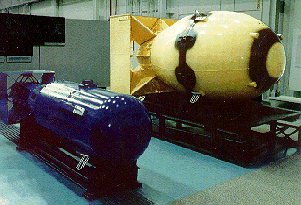
Bombs used in Japan
- Germany was clearly defeated and the Japanese were retreating--was it necessary to use the bomb?
- Could there have been a demonstration and warning instead? Would it have been used in Europe or was racism a factor?
- After spending $2 billion would the government have been accused of wasting money if it wasn't used?
- when Roosevelt died on April 12, 1945, the bomb project was so secret that Vice President Harry Truman didn't even know about it. The bomb was used because having built it everyone assumed that having built it they would use it.
- three B-29 bombers set out for Hiroshima , Japan on Aug. 6, 1945. The Japanese sounded the all-clear when they saw only 3 planes. The Enola Gay dropped the 5 ton bomb and it exploded with the force of 15,000 tons of TNT. 130,000 people died within 3 months, 68% of the buildings of the city were destroyed.
- A plutonium bomb was dropped on Nagasaki on Aug. 9, 1945. Exploded with the force of 22,000 tons of TNT.
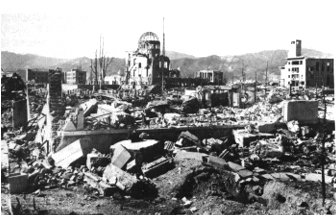
bomb damage in Hiroshima
Does it fit the theory of just war?
The scientists tried to prevent an arms race from developing. Why did they feel so strongly, and did they have any hope of success?
People were frightened by the bomb and began to question the idea that technological progress was always good
- the cold war meant real fears that a nuclear war would start
- Hiroshima made vivid the dangers of radioactivity,
leading to movies about mutant monsters (Godzilla, 1954)
- young people in the 1960s began to reject the boring lives their parents had wanted after WWII
- Rachel Carson published Silent Spring in 1960, and public concern about environmental issues grew rapidly
- the Civil Rights Movement was showing the American people that you can change the wrongs of society
- Sputnik (the first artificial satellite) and computers started a new technological age
- The space program turned out in some ways to be a
dead end, while the computer has taken us in very
different directions
World War II changed the relationship between science and government
Scientists involved in the war wanted several things after the war: Continued military funding, a civilian Atomic Energy agency, and civilian funding source for basic scientific research
Lessons Learned from WWII:
- Basic science=power
- we can develop new technologies quickly to do whatever we want
- technology gives us dangerous power
- some policy issues require technical knowledge in order to understand the issue
- wrote a prediction of the future in 1945--quite accurate except he missed completely the digital computer (much of his engineering research had been on analog computers)
- wrote a report later published as a book called: Science: The Endless Frontier
- his belief that the federal government should pay for basic scientific research led to the National Science Foundation
- he was critical of the manned space program on the grounds that it was too dangerous
- he understood that managing information was becoming a key problem
Military support for science
- Department of Defense was convinced that research was essential; leftover wartime money poured into basic research, eg. at the new Office of Naval Research
- Office of Naval Research in 1948 supported 700 projects in 150 universities and nonprofit labs involving 2000 scientists at a cost of about $20 million a year
- this was basic research, not specific military projects. The Navy actually worried about whether universities would accept military funding, but these grants were unclassified and had no controls on publication. Scientists had few qualms
- other military services started similar programs
- Some fields of science got a lot more funding than others (eg. chemistry suffered relative to physics
- universities became big businesses
- “big science”: big projects run by teams of scientists instead of individual scientists designing their own work
Millions of Dollars (not adjusted for Inflation)
| year | Dept. Defense | AEC/DOE | NSF | total |
| 1952 | 31 | 34 | 1 | 121 |
| 1955 | 20 | 42 | 10 | 130 |
| 1960 | 168 | 104 | 68 | 590 |
| 1965 | 263 | 258 | 171 | 1,435 |
| 1970 | 317 | 287 | 245 | 1,926 |
| 1975 | 300 | 313 | 486 | 2,588 |
| 1980 | 540 | 523 | 815 | 4,674 |
| 1985 | 861 | 943 | 1,262 | 7,819 |
| 1990 | 948 | 1,505 | 1,586 | 11,286 |
| 1995 | 1,264 | 1,634 | 1,973 | 13,895 |
(source: Table A)
- Scientists wanted the continuation of federal research funding, from a civilian agency. Vannevar Bush wrote a report calling for this called: Science: The Endless Frontier
- Senato Harry M. Kilgore (D. West Virginia) proposed a bill in 1944 emphasizing R&D for small business. Patents were to be owned by the federal government
- Senator Magnuson proposed a bill along the lines the scientists wanted--scientists would decide how to spend the money
- mid 1946 compromise leaning towards Kilgore failed to pass, 1947 compromise leaning towards Magnuson passed but was vetoed by Truman on grounds of lack of accountability
- compromise finally passed in 1950, but only got $225,000 total the first year
Federal Funding
for Research and Development
Millions of
Dollars (not adjusted for inflation)
(source:
Table
B)
| year | Dept. of Ag. | Dept Defense | AEC/DOE | NASA | NSF | Total |
| 1951 | 55 | 1,123 | 158 | 45 | .15 | 1,522 |
| 1955 | 72 | 1,529 | 253 | 43 | 10 | 2,045 |
| 1960 | 126 | 5,712 | 762 | 369 | 75 | 7,552 |
| 1965 | 225 | 6,797 | 1,241 | 4,952 | 187 | 14,614 |
| 1970 | 281 | 7,360 | 1,346 | 3,800 | 289 | 15,339 |
| 1975 | 420 | 9,012 | 2,047 | 3,064 | 595 | 19,039 |
| 1980 | 688 | 13,981 | 4,753 | 3,234 | 882 | 29,830 |
| 1985 | 943 | 26,792 | 4,966 | 3,327 | 1,346 | 48,360 |
| 1990 | 1,108 | 37,268 | 5,631 | 6,533 | 1,689 | 63,559 |
| 1995 | 1,380 | 34,362 | 6,145 | 9,015 | 2,149 | 68,755 |
The Cold War was the primary justification for all this military spending on science and technology:
Origins:
- The U.S. was already afraid of communism before World War II, but the Soviet Union was our ally against Germany
- Once it was clear that Germany was falling, both countries rushed to occupy as much territory as possible. One the reasons the U.S. used the Atom Bomb was to end the war faster so the Soviets would not take as much territory in Asia
- The Soviet Union wanted some control in what it saw as buffer states, and tended to move towards making them puppets.
- The U.S. saw this as the Soviets moving to gradually expand towards world dominion and developed a policy of containment. The Truman Doctrine (1947)--the U.S. would help the people of free countries fighting communist takeover (either from without or within)
- mindset--everyone has to choose sides
- The U.S. supplied Berlin by air (which no one was sure would be possible) when the Soviets blockaded it in 1948 to try to take complete control.
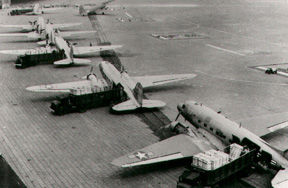
planes lined up for Berlin airlift, US Air Force Photo
- Domino theory--fear of other countries falling to communism
- The Red Scare of the 1950s (Joseph McCarthy)--anyone who had had communist or disloyal ideas was a threat to the nation and should loose their job
- Korean War (1950-53)
- Cuban Missile Crisis , October 18-29, 1962. The Soviet Union was installing nuclear missiles in Cuba. Kennedy responded by blockading Cuba. The Soviet leader, Nikita S. Khrushchev, authorized the firing of nuclear weapons against the U.S. if the U.S. invaded Cuba. After several days the Soviets agreed to remove the missiles.
- The Department of Defense got lots of
money to develop new technology because it was seen as a
wartime necessity
The Nuclear Arms Race
- The Soviets did not start full-scale research on an atomic bomb until after Hiroshima, but once Stalin realized its importance and started pushing they caught up fast.
- first Soviet atomic bomb tested Aug. 1949 (espionage helped them at most by 3 years). Stalin wasn’t satisfied he was secure still and the U.S. felt a lot more insecure
- The first Soviet atomic bomb had used the same design as some early U.S. bombs. But the first Soviet hydrogen bomb was an original design, different and perhaps even ahead of that of the United States. On August 12, 1953, the Soviet Union exploded its first thermonuclear bomb at the Semipalatinsk test site in Kazakhstan.
- U.S. cold war strategy was based on bombers carrying nuclear weapons--for one thing, it was cheap, and Truman and Eisenhower both were reluctant to increase the size of the government and distort the economy by large-scale defense spending. Substituting technological superiority for a large standing army put a new weight on being ahead
- after initial slow development, intercontinental ballistic missiles came to be seen as the next key technology
- First successful test of Atlas was Dec. 1957, first unit activated April 1958 but real operational capability probably not until 1959. Initially had to be erected and fueled (and LOX) before launch.
- Soviet R-7/SS-6 Sapwood ICBM tested Jan. 30, 1958, limited operational capability in early 1960.
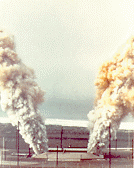
Titan ICBM
- Jules Verne's novel From the Earth to the Moon (1865), featuring a launch from a cannon in northeastern Florida
- Konstantin Tsiolkovsky's work (influenced
by Verne) in Russia on the theory of rocket propulsion?
- in 1903 he published a book titled Exploring
Cosmic
Space with Reactive Devices in which he laid out
the mathematics of orbital mechanics and designed a
rocket powered by liquid oxygen and liquid hydrogen.
- Recognized many of the problems, eg.
burning up during reentry, and thought of multistage
rockets (which he called rocket trains).
- No attempt to experiment--he received
only one small grant.
- Saw spaceflight as liberation from human limits and the first step towards the perfection of human society.
- in 1903 he published a book titled Exploring
Cosmic
Space with Reactive Devices in which he laid out
the mathematics of orbital mechanics and designed a
rocket powered by liquid oxygen and liquid hydrogen.
- Robert Goddard's theories (1919 treatise A
Method of Reaching Extremely High Altitudes), and
experiments, starting in 1926, with small, liquid-fuel
rockets
- In 1930 Goddard set up full time research in New Mexico, attempting 41 launches, 31 of them successful, in the next 11 years. His largest rocket was 22 feet in length, fueled with gasoline and liquid oxygen. After 1941 he couldn't get further support, and he died in 1945.
- He was much laughed at and couldn't take it, so he conducted his research privately, failed to build an organization, suffered from lack of support, and had little influence. He repeatedly failed to get military funding (on the grounds that the U.S. had no need for military rockets at that time), and while he received over $200,000 from foundations, it was on a year by year basis that made it difficult to undertake large projects. His fame came only when space travel began to look realistic--in 1960 the U.S. government awarded his family $1 million for the rights to use more than 200 of his patents.
- the roots of this development are in an society of amateur rocketeers inspired by a German-speaking Rumanian schoolteacher and rocket theoretician, Hermann Oberth, who published The Rocket into Planetary Space in 1923
- The Society for Space Travel (VfR) was founded in 1927, with Oberth as its president

Society for Space Travel
- by 1929 it had 870 members, including Wernher von Braun, who had just graduated from high school.
- It had two goals: popularize the idea of flight to the moon and planets and perform serious experiments in rocket propulsion.
- Oberth was a classic incompetent theoretician (one of his colleagues said that if "Oberth wants to drill a hole, first he invents the drill press"), early efforts resulted in many explosions including one that killed a member, Despite these problems, the society successfully launched 87 small liquid-fueled rockets in 1931 from an abandoned WWI ammunition storage facility (including one that set fire to a nearby police station). Experiments continued at a slowing rate until 1934, when the society went bankrupt
- Amateur research could only afford to go so far: the VfR was funding only by dues and admission charged to view launches. The leaders of the VfR promoted the idea of rockets as weapons in hopes of getting the funding they needed.
- The German army became interested in rockets in 1929 as a way of getting around the treaty of Versailles limits on the army
- In 1932 the German army assigned Walter Dornberger to look into liquid-fueled rockets, and he hired von Braun and a number of amateurs--but clearly to develop a weapon, not space travel
- This led to the building of the V-2 intermediate range ballistic missile, used against England.
- When the war was over von Braun arranged to to captured by the U.S. not the Soviet Union and said he wasn't a Nazi, he was only interested in space travel.

captured V-2 being prepared for launch
- U.S. cold war strategy was based on bombers carrying nuclear weapons. For one thing, it was cheap, and Truman and Eisenhower both were reluctant to increase the size of the government and distort the economy by large-scale defense spending. Substituting technological superiority for a large standing army put a new weight on being ahead
- Project RAND (an Air Force think tank) produced in May 1946 a report: "Preliminary Design of an Experimental World-Circling Spaceship" mentioned reconnaissance, weather, and communications
- In 1951 RAND scientists visiting Wright Field heard a briefing by James Lipp of Boston University's Physical Research Laboratory about using television for satellite reconnaissance. The key RAND reconnaissance people though the idea was ridiculous, and set out to disprove it with pictures taken at 30,000 feet with 8mm movie camera lenses mounted to a 35mm Leica camera loaded with coarse grain film and processed for poor resolution. The pictures showed streets and bridges, convincing Amrom Katz and others that satellite reconnaissance was feasible.
- the army had von Braun working on medium range ballistic missiles, the Air Force was working on the Atlas intercontinental ballistic missile, and the Navy's Naval Research Lab was doing a wide range of scientific research on rockets--but none of these had high priority or crash project funding
- Korean war led to more funding for
intercontinental ballistic missiles in 1951--Atlas--but
with funding only for a slow development process (at
Convair, even in FY 1954 Atlas got only $14
million). Only in 1954 was the decision make to give
it high priority

- What created stronger interest in the Department of Defense was not only fears of intercontinental ballistic missiles but the lure of spy satellites.
- Balloon reconnaissance over the Soviet Union began in 1956--243 balloons were never heard from again and only 44 were successfully recovered (the Soviets put some on display in Moscow and showed pictures of an air base in Turkey they said they had found on the film carried by one of the balloons)
- The U-2 was approved in 1954, designed by Kelly Johnson and the Lockheed Skunk Works in 80 days, and first used in 1956. A Clemson alumnus piloted one of the key flights.
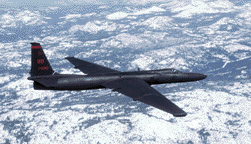
U-2, US Air Force photo
- One of the key problems for an open state competing with a closed one was information. You could do it with aircraft--U-2, but only at substantial risk--a U-2 was shot down over the Soviet Union in 1960, creating a major diplomatic incident. This proved to be how rockets and particularly launching satellites finally got substantial support
- But this raised an interesting dilemma--it wasn't a race for a spy satellite but an idea for something the Soviets didn't need and wouldn't like
- Eisenhower insisted that the project be peaceful rather than military. For one thing, this reflected his attempt to avoid a military-dominated state.
- this may also have been a strategy to establish the legitimacy of satellite overflight. Where do air rights end?--how to establish open skies in international law
- one way to do it is to launch a scientific satellite, preferably under international auspices (IGY). Far better that this be launched by the Navy's rocket built for scientific research than by what would clearly be a ballistic missile (then it would just look like a military test)
- or, you can let the Soviet Union launch first and not complain when their satellite goes over the U.S. Then they can hardly complain when a U.S. satellites goes over them
- The Naval Research Lab's Vanguard program was chosen for the first launch in a close vote by a panel of experts (on the basis of a better satellite) to launch the first satellite instead of von Braun's Redstone/Jupiter (which could have reached orbit in a test flight in Sept. 1956 if it had had a live upper stage). This was probably not a political decision, but it was on the basis on science, not a race with the Russians
- What is clearly political is that the DoD and Eisenhower went along with that choice, knowing that it almost surely meant that the USSR would launch first
- And they did, launching Sputnik 1 on October 4, 1957

Sputnik 1, National Air and Space Museum
- This lead to a large public furor and the creation of the National Aeronautics and Space Administration
- goal: to orbit and recover a manned satellite at the earliest practical date and to investigate the capabilities of man in this environment
- configuration: a ballistic capsule with high aerodynamic drag to be landed with parachutes
- the Atlas ICBM was the most reliable available booster system (although not tested successfully until Nov. 1958), but expensive ($2.5 million each) and not yet available, so testing was done with a cluster of solid rockets called little Joe and with Redstone
- In Dec. 1958 Eisenhower decided to draw astronaut candidates only from the pool of military test pilots (for security reasons, for one thing). The education requirement was reduced to bachelors degree or equivalent and test pilot school.
- Testing of astronaut candidates started in early 1959 from a pool of 110 qualified pilots. 32 were selected on the basis of written and psychological tests for physical testing. This testing followed a pattern set up for the ManHigh research balloon program--very detailed medical testing to ensure good health and establish a baseline and environmental tests. 18 of the 31 were recommended without medical reservations. They went into a program of training and participation in system design
- the first unmanned test of the Mercury capsule with the Atlas booster was held July 29, 1960. One minute after lift-off telemetry showed a complete loss of pressure in fuel tanks, then telemetry was lost. The booster was in the clouds at the time, but apparently it either exploded or suffered catastrophic structural failure.
- In Sept. 1960 an Atlas-Able carrying an early moon probe also failed severely, raising questions about the use of Atlas for Mercury which were particularly severe because of the pressures of an election year.
- There was a lot of press criticism that Mercury was not a crash program, but rather took things one step at a time with attention to budget and took second priority to the ICBM program.
- the first test of the Mercury-Redstone combination to be used to launch a person into ballistic flight was conducted on Nov. 21, 1960. The booster lifted 4 inches off the launch pad and then settled back down. The escape tower activated and took off, without the capsule, landing near the launch site and the capsule, still sitting on the booster, shot out its parachutes. Disarming the booster was not easy, but at least it was available for study to determine the cause of failure (a plug which disconnected unevenly, sending an abort signal).
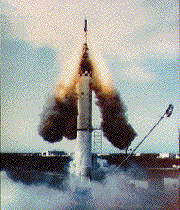
Mercury-Redstone 1, NASA photo
- on Dec. 19, 1960 a successful test of Mercury-Redstone was finally completed.
- the question of whether a human being could survive in space became unnecessary on April 12, 1961, when the Soviet Union launched Yuri Gagarin into orbit in a capsule weighing 3 times what Mercury weighed. No news of the flight was released until after recovery.
- on May 5, 1961, Alan B. Shepard, Jr., rode a Mercury-Redstone in a ballistic orbit into space on live TV
- safety of the Altas was such a concern that a chimpanzee named Enos was launched on Mercury Atlas 5 on Nov. 28, 1961. The machine to test his abilities under stress--pulling levers to receive a reward or avoid punishment--malfunctioned and he received shocks even when correct. He performed, but arrived on the ship hopping mad.
- after a series of delays John Glenn was finally orbited on Feb. 20, 1962, Scott Carpenter on May 24, 1962, Walter Schirra on Oct. 3, 1962, and Gordon Cooper on May 15, 1963 (observations of the earth).
- The Dec. 1960 PSAC Report had projected a
manned circumlunar flight about 1970, and a manned landing
on the moon about 1975 at a total cost of $26 to 38
billion.
NASA included only circumlunar flight in its ten year plan, yet as early as mid-1959 NASA had identified a manned trip to the moon as a logical next step after putting people in space and had started the necessary planning. - Eisenhower refused to include money for
Apollo development in his 1962 budget, while at the same
time he approved development of an anti-satellite
satellite
Meanwhile, Kennedy was elected in November 1960, having made a big fuss in his campaign about the missile gap (which did not in fact exist) - the first signs from the Kennedy administration were negative on space in general--NASA worried he would support the Air Force which wanted NASA to be replace by a military space program
- Kennedy's vice president, Johnson, had long been a major supporter of the space program
- Not until Jan 30 did Kennedy appoint a new NASA administrator, James Webb, who took office Feb. 14. But Webb was clearly an ambitious man
- April 12, 1961, Soviet Union launched Gagarin, and the U.S. was again embarrassingly behind
- at an April 14 meeting it became clear
that Kennedy wanted to accept the Soviet challenge, but
was worried by the cost
on April 17 a group of anti-Castro Cuban exiles, trained and financed by the U.S. invaded Cuba in what came to be called the Bay of Pigs fiasco because it was a total failure. - on April 19 Kennedy asked Johnson to find a "space program which promises dramatic results in which we could win. Johnson and the Space Council organized hearings to answer this question. concluded that there was no chance of beating the Russians in putting a multi-manned laboratory in space
- NASA said we could beat the Russians to the moon, and set 1967 as a target date. Accelerating the program would raise the cost from $22.3 billion to $33.7 billion
- Meanwhile, on May 5, 1961, Alan B. Shepard, Jr., rode a Mercury-Redstone in a ballistic trajectory into space, with live TV coverage. This was a reminder of what good press came from putting people in space
- Webb and Secretary of Defense MacNamara, with Johnson's blessing, wrote a memo entitled "Recommendations for our National Space Program: Changes, Policies, Goals." Called for a manned lunar landing before 1970, emphasizing national prestige and international competition
- Kennedy approved this as it stood--proposed a 61% increase in 1962 NASA budget
- On May 25, in a speech (listen to it all) entitled "Urgent National Needs" Kennedy said: "I believe that this Nation should commit itself to achieving the goal,before this decade is out, of landing a man on the moon and returning him safely to earth."
- the key point is that Apollo was a crash program--faster than even NASA had planned. The essential definition of a crash program is that different approaches are worked on in parallel
What caused the end of the cold war?
- bankruptcy of the Soviet Union
- due to arms race, corruption, problems with their system
- some people argue that Reagan's commitment to Strategic Defense Initiative (defense against ICBMs) was the specific increase in the arms race that the Soviets couldn't afford
- thaw in relationship between U.S. and Soviets in later 1980s, new willingness to negotiate on both sides, the U.S. didn't take advantage of Soviet weakness
Transformation of Soviet Union
- Gorbachev's Coming to Power (1985)--a new generation
- Economic Reform Plan: Perestroika
(Restructuring)
- make the system work better by giving more incentives
- not traditional incentives but market-based incentives--small step towards a free market
- Political Reform Plan: Glasnost (Openness) eg. less censorship of newspapers, arts
- Foreign Policy: From Detente (willingness to make treaties with your enemy to make things stable) to Disengagement (step out of the race)
- Poland: Elections of 1989--Poles had an election and chose leaders who weren't Soviet puppets, the Soviets did not intervene
- Fall of Berlin Wall (Nov. 9, 1989)--see also a personal account
- came from ordinary people who refused to live by the old rules
- Reunification of Germany (1990)
- Disintegration of Soviet Union (1991)
- Secession of Baltic States [Lithuania, Latvia, Estonia]
- Aborted Communist Coup
- Collapse of U.S.S.R. & Boris Yelsin's rise to power--moving substantially away from communism
- end of the arms race--no one to compete with any more
- new mission--small wars, police actions (when do you have the right to interfere in another country?)
- need different kinds of weapons, spending money different places
- budget cuts, major cuts in some programs